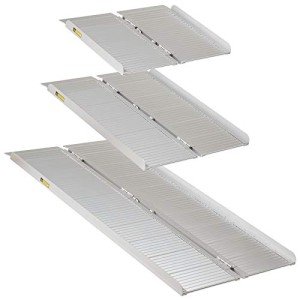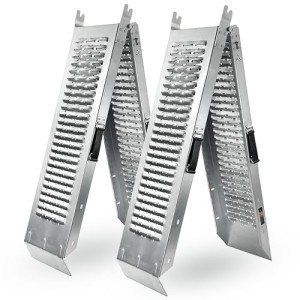It's The One Ramps For Wheelchair Trick Every Person Should Be Able To
페이지 정보
작성자 Octavio 댓글 0건 조회 3회 작성일 25-10-26 06:11본문
Understanding Ramps for Wheelchairs: A Comprehensive Guide
Wheelchair accessibility is essential for promoting self-reliance and mobility for individuals with disabilities or mobility difficulties. Ramps play an important function in ensuring that individuals who use wheelchairs can navigate their environments securely and without barriers. In this post, we will check out the importance of wheelchair ramps, the various types offered, standards for setup, and regularly asked concerns about wheelchair ramps for wheelchairs (www.mymobilityscooters.uk).

The Importance of Ramps for Wheelchairs
Ramps are vital setups created to help with smooth shifts between different elevation levels. They not just enhance mobility for wheelchair users but likewise improve availability for individuals using other mobility help, such as walkers or crutches. Here are some crucial reasons that ramps are important:
- Improved Accessibility: Ramps provide wheelchair users the ability to access buildings, homes, and public areas that might otherwise be off-limits due to stairs or uneven ground.
- Security: Ramps decrease the danger of falls and accidents connected with browsing stairs, particularly for individuals who may battle with balance and mobility.
- Compliance with Regulations: Many nations have particular standards and policies focused on making sure accessibility for people with impairments. Ramps help meet these legal requirements.
- Self-reliance: By offering a safe methods of access, ramps improve the independence of wheelchair users, allowing them to navigate their surroundings without support.
Kinds Of Wheelchair Ramps
Ramps can be found in various styles and materials to fit a wide variety of environments and needs. Below is a summary of the most common types of wheelchair ramps:
| Ramp Type | Description | Ideal Use |
|---|---|---|
| Long-term Ramps | Built from tough materials like concrete or wood and are suggested for long-term use. | Residential homes, public structures |
| Portable Ramps | Lightweight and created for simple transportation and setup. Usually made from aluminum or fiberglass. | Temporary access at occasions, homes, or travel |
| Folding Ramps | Portable ramps that can be folded for simple storage and transportation; they come in adjustable lengths. | On-the-go availability |
| Threshold Ramps | Brief ramps developed to bridge the space in between a door and a flooring; helpful for small steps. | Entry thresholds in homes or services |
| Car Ramps | Particularly designed for loading wheelchairs into cars; they can be foldable or expandable. | Vans, SUVs, and vehicles |
| Modular Ramps | Made from interlocking components that can be personalized for numerous heights and lengths; suitable for temporary or permanent access options. | Community centers, schools |
Elements to Consider When Choosing a Ramp
When selecting a ramp, it's important to assess a number of elements to make sure security and use:
- Height: The height the ramp requires to cover.
- Length and Angle: Ramps ought to have a gentle slope for optimum ease of usage. The Americans with Disabilities Act (ADA) advises a 1:12 slope ratio (1 inch of height for every 12 inches of length).
- Products: The material impacts weight capacity, toughness, and upkeep.
- Weight Capacity: Always check the weight limitation of the ramp to guarantee it can securely accommodate the user.
- Area: Indoor vs. outdoor use may affect the kind of ramp picked.
Setup Guidelines
Establishing a wheelchair ramp needs careful preparation and adherence to guidelines laid out by the ADA and local guidelines. Here are some critical steps to keep in mind:
- Site Assessment: Evaluate the setup website for area, slope, and surface area conditions. Guarantee that the location is devoid of obstacles.
- Style Compliance: Follow regional and state structure codes and ADA specifications for ramp measurements, consisting of width, slope, and landings.
- Landings: Ensure that landings at both the top and bottom of the ramp are flat and sufficiently large to enable for safe turning or steering.
- Upkeep: Regularly inspect the ramp for any indications of wear or damage. Make sure that surface products provide appropriate traction in numerous climate condition.
Regularly Asked Questions About Wheelchair Ramps
Q1: Are wheelchair ramps needed by law?
Yes, numerous jurisdictions have laws needing particular buildings and public spaces to be accessible to people with impairments, consisting of the installation of wheelchair ramps.
Q2: How high can a wheelchair ramp be?
According to the ADA standards, the maximum slope allowed is 1:12 for wheelchairs, which equates to a one-inch increase for each 12 inches of ramp length.
Q3: Can a wheelchair ramp be installed on stairs?
Yes, wheelchair ramps can be developed to accommodate stairs, however it may be essential to consider the security of both the user and the structure.
Q4: What products are best for outdoor wheelchair ramps?
For outside ramps, materials like aluminum and treated wood are commonly chosen due to their sturdiness and ability to stand up to weather elements.

댓글목록
등록된 댓글이 없습니다.
